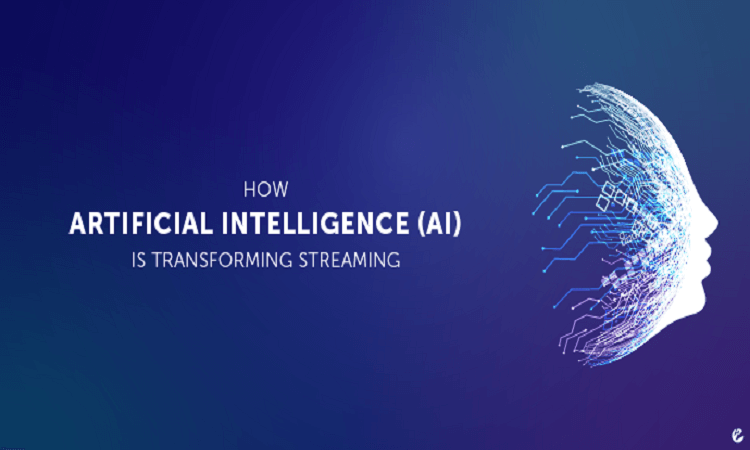Artificial intelligence or AI is a broad term that encompasses deep learning and machine learning technologies that promise to transform almost every industry including online video streaming.
How Deep Learning Is Transforming Online Video Streaming
Forvideostreamingplatform, deep learning has become a common aspect. Video streaming statistics show that the live streaming market is expected to reach $79 billion by 2021. Deemed growth of digital technology rapid evolution of online streaming services unfolded never-ending demand to meet the requirements of users.
Satisfying their unique requirements will help video streaming platforms to a fully automated solution with a competitive advantage. The online video streaming and the live streaming market is advancing like never before.
Importance of AI in video streaming
Using video streaming technology, viewers can access and view the videos from anywhere in the world according to their convenience through the devices of their choice. At the same time, this benefit comes with a few disadvantages like the issues of accessibility, privacy issues, etc.
Leveraging AI in video streaming not only helps in building an advanced video streaming solution, but also a reliable, scalable, and secure networking solutions that work according to the unique requirements of your end-users. The power of AI and deep learning also ensures zero delays, improved OTT streaming, and a lot more.
Here are some of the different ways of how AI in video streaming helps with different aspects to improve the streaming experience.
Prevent copyright infringement
Preventing copyright infringement is one of the scalable aspects of artificial intelligence. AI technology can be used to identify any type of copyright infringement that takes place during video streaming. However, using AI to this level is still in the research papers. Video streaming platforms monitor and control the content published on the platform to avoid privacy issues. However, this is not just enough to filter the video streams published every day.
However, using deep learning models can be used for image processing and recognition. These AI models can scan images and videos to detect objects and categorize them based on the knowledge base. For instance, you can train the algorithm to identify objects or problematic content in the pictures and videos. This AI software generates digital signatures for illegal content and blocks similar content from being uploaded again.
Adaptive bitrate
Adaptive Bitrate is a technology that handles the adjustment of the compression level and video quality of streams to match the available bandwidth at the viewer’s side. ABR allows video streams to adapt to the current user bandwidth by avoiding buffering issues without interrupting the video flow. ABR does not adjust the solution of the videos that are streaming. It doesn’t make the necessary distinction to offer high-quality images.
What it must actually do is differentiate between the images that need more resolution. This is where deep learning can help to cover that gap left by ABR. AI software can scan the entire video and decide what quality is required at a given moment to ensure that end viewers get the best possible quality for a given situation.
Video compression
One of the important applications of AI in video reaming is video compression automation. AI can be used for integration in modern video compression software that allows compressing videos on the go when uploading to the cloud. Machine learning can be used to optimize video encoding. The initial step is to train the algorithm by feeding test panels to it. The end goal is to build a predictive model that is fed into the encoding system later. The system then applies predictive encoding models to optimize the resolution, bitrate, and frame rate.
Natural language processing (NLP)
NLP is a subcategory of deep learning that allows the software to understand and process the language of humans. NLP is efficiently used in live transcriptions, audio descriptions, and captions.
The end goal for software is to attain the same level of language understanding just like humans. If you are looking for how to start an OTT business, make sure you use NLP for live captioning purposes and communication in multiple languages to interact with a global audience.
Content management
The amount of data generated in a video streaming platform is immense. The information processed from this user data can be a lot more than what you can extract manually. Hence, the integration of AI is necessary to interpret streaming content and extract metadata through categories, description tags, etc. automatically. This will give space for more video insights, intelligent analytics, and content management, thereby paving way for efficient ways to make money with your video offerings through targeted advertisements.
Conclusion | How Deep Learning Is Transforming Online Video Streaming
Deep learning is a great solution to optimize video streaming workflows and ultimately leads to cost savings. Processing information and data in a video streaming platform cannot be done manually as there is a lot of information to be processed. However, AI can understand the type of content being streamed easily, optimize latency, adjust the bitrates and protocols, and can be used in both live streaming and VOD streaming. While deep learning and AI have several beneficial applications in video streaming, the technology is still evolving, leaving a lot of room for more advanced development in the future.
